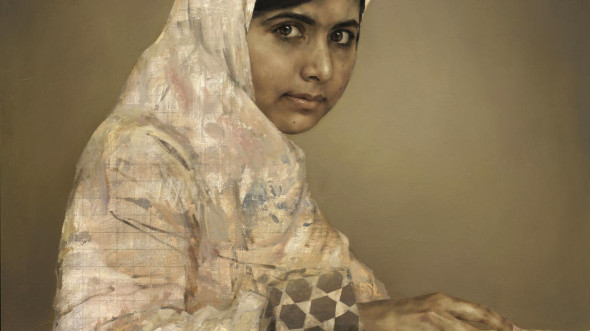The display of Malala Yousafzai’s portrait at the National Portrait Gallery in London stands as a resounding victory for a girl who suffered at the hands of a brutal militant group. Jonathan Yeo’s rendering of Malala seated with a book at her desk is particularly apt as it captures the essence of what she stands for: a bright, progressive young girl with a passion for education. It is also a victory for Pakistan as Malala’s aspirations represent those of the vast majority of Pakistanis. Her stirring speech at the United Nations was a testament to her bravery, “…the Taliban shot me on the left side of my forehead. They shot my friends too. They thought that the bullets would silence us. But they failed. And then, out of that silence came, thousands of voices.”
With a lack of a popular mandate, how have terror groups managed to gain ascendancy? That relatively small retrogressive forces have gained such momentum in Pakistan is an appalling failure of governance as the state apparatus has repeatedly failed to counter the militant onslaught. The brazen jailbreaks of Bannu and Dera Ismail Khan only demonstrate the aggregating power of these groups and the alarming incompetence of state security systems. As unchecked corruption, unbridled judicial activism and grinding poverty remain unaddressed, militants are able to strengthen their hold in a country where the infiltration of violence and criminality into everyday life has been accompanied by increasing deprivation.
As the United States continues to build the case for bombing Syria, securing peace in a battle scarred Afghanistan remains elusive after over a decade of war. Years of bloody conflict have laid bare the futility of the United States’ military intervention; instead a political settlement with the Taliban is being negotiated. The imminent release of senior Taliban commander Mullah Abdul Ghani Baradar by Pakistan, in a peace building move between the two neighbouring countries, demonstrates that after a prolonged and bloody conflict, the Taliban have emerged as a legitimate political force. Afghanistan had been pushing for his release for a long time arguing that it will help the peace process.
Having just celebrated 66 years of independence, the popular picture of Pakistan as a country of fanatical zealots runs counter to the very fabric of the country’s culture and society. Over recent years, a reductive view of the country has been reinforced, perceived overwhelmingly as a site for terrorism, violence, instability and venal politics. But the land is undeniably special.
Pakistan’s story starts with the dramatic creation of the subcontinent, formed by an apocalyptic collision between the two tectonic plates of North Africa and Eurasia. From this geological cataclysm sprang the Himalayas, the Indus river system and its tributaries. When you fly over the Himalayan range, it almost looks like a massive scar, the remnant of a mighty clash.
The blind river dolphins, unique to the Indus and her tributaries, are a sublime legacy of the river’s oceanic past when it was once the primordial Tethys Ocean. Vast tracts of unspoiled desert in Sindh and Balochistan are undulating reminders of this once great ocean. The Indus gave birth to the Punjab, the fabled land of the five rivers. Ancient civilsations flourished and prospered. The Indus commanded reverence and respect and its river gods were celebrated by all communities.
Pakistan was once a site where religions converged, overlapped, integrated, leaving behind magnificent structures: ancient stupas signify the propagation of Buddha’s teachings in Pakistan, Hindu temples stand in silent testimony affirming the magnificent stories rendered in great Hindu epics like the Mahabharat. Guru Nanak is believed to have spent part of his life in the Punjab near Hasan Abdal. Pakistan’s pantheon of mystics used the local landscape as allegory to explain the transcendental and people wholeheartedly embraced their religious attitudes. To this day thousands of people flock to the shrines of Lal Shahbaz Qalandar, Data Ganj Bukhsh and Abdullah Shah Ghazi. This is perhaps why so many people who come to Pakistan are confronted with an enchanting land and people with an unparalleled tradition of warmth and hospitality.



